For flat or sloping roofs on our Log Cabins we normally supply roofing felt. However as an option we do have the far more superior roofing material of EPDM.
What is EPDM?
EPDM is a highly durable synthetic rubber roof membrane.It’s posh name is Ethylene Propylene Diene terpolyMer. It’s two main ingredients are Ethylene and Propylene which come from oil and natural gas. EPDM has been used on flat roofs for over 40 years. The main technical features of EPDM are:
- Cyclical membrane fatigue resistance
- Proven hail resistance
- High resistance to ozone, weathering and abrasion
- Flexibility in low temperatures
- Superior resistance to extreme heat and fire
- Thermal shock durability
- Ultraviolet radiation resistance
- High Wind Resistance
Why Use EPDM on your Log Cabin?
Roofing felt is an ideal solution for a flat or gently sloping roof. However it’s life expectancy is not that high. Ordinary felt has a lifespan of about 5 years. Laying EPDM lasts for thirty years without concern. For a long term economic prospect it is good value for money.
The Benefits of laying EPDM on your Log Cabin Roof
- Cut to size for your building so no joints (except modular buildings)
- Inert and UV stable
- Will not crack or Perish
- Environmentally friendly
- Applied cold
- Virtually maintenance free
- Long Life Expectancy
- Economical when compared to re-felting every few years
Laying EPDM
There are three ways to fit EPDM, this includes Ballast, Mechanically Attached and Adhered.
The Adhered system is the one we will use and is used by many roofing companies. Basically it is glueing the membrane to the roof and is pretty easy to do.
Log Cabin Roof Variations
Before reading too much further all this article is going to do is tell you the basics on how to start laying EPDM to your log cabin roof. Simply put the membrane is:
- Rolled out
- Allowed to settle
- Glued down
- Trim as you wish
On the other hand, the trim is the bit that’s left up to you. There is no hard and fast rules for this. You can either finish as you would with roofing felt and tuck it behind your barge boards. You may want to trim it flush with the roof boards. Or maybe do a little more. Overall, this is all up to your preference, requirements and skill set.
Also, bear in mind this is my own personal recommendation on how I do it. I’m sure other fitters, roofers, builders etc will have their own take on it. Some may even say I’m wrong which wouldn’t be the first time.
Roll out the EPDM on your Log Cabin Roof
Take the roll up on to the roof and undo the ends. You should find some glue inside in the form of spray cans.
Normally hidden inside is enough cans to glue your roof down. It’s very unlikely you won’t have enough but any contact adhesive also works if you run out and need it quickly.
Three cans were found in the depths of the roll. The EPDM is cut for your building, this membrane is 3.9m x 5.4m. Three cans was more than enough. This is where I may differ from all the advice you see from the roofing people, they always say to unroll it, layout flat on the roof and then allow it to settle as it is.
I have done it this way and it works on a hot day but I still prefer my technically named sausage method:
Roll the full length out across the roof and start to fold it out flat across the whole roof. Then, start to roll it up again lengthways, try to do this reasonably tightly, it does help if there is two of you and try to keep it as level as possible. Keep rolling together with your partner, keep it level and quite tight!
At the end you’ll end up with a sausage!
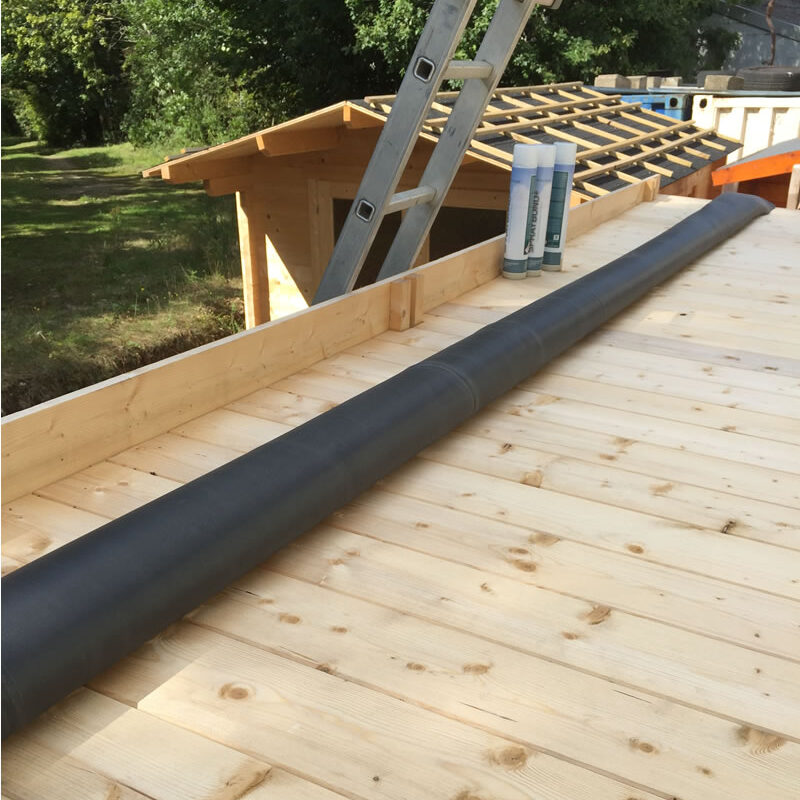
Allowed to Settle on the Log Cabin Roof
When complete you’ll end up with a sausage sat at the start of your roof. I will always start at the highest point and work backwards.
I mentioned trimming earlier and you’ll notice where we have set the barge boards. This is just my preference, there is no right or wrong way. I wanted to give a little extra clearance for headroom below. It does not matter though how you do these.
It does help though to only start with the front ones on. Then add the side and rear if applicable later.
Once you’ve made your sausage, leave it for a little while on the roof. As it’s rolled so tightly, a lot of the creases from storage will disappear. The sun will also make it a little more pliable.
I’ve mentioned it already but it really helps if the sausage has been rolled level as you will use it’s edges later on to check you are rolling it out on the log cabin straight and true.
If you end up with a wonky sausage unroll it and start again. Nothing worse than a wonky sausage!
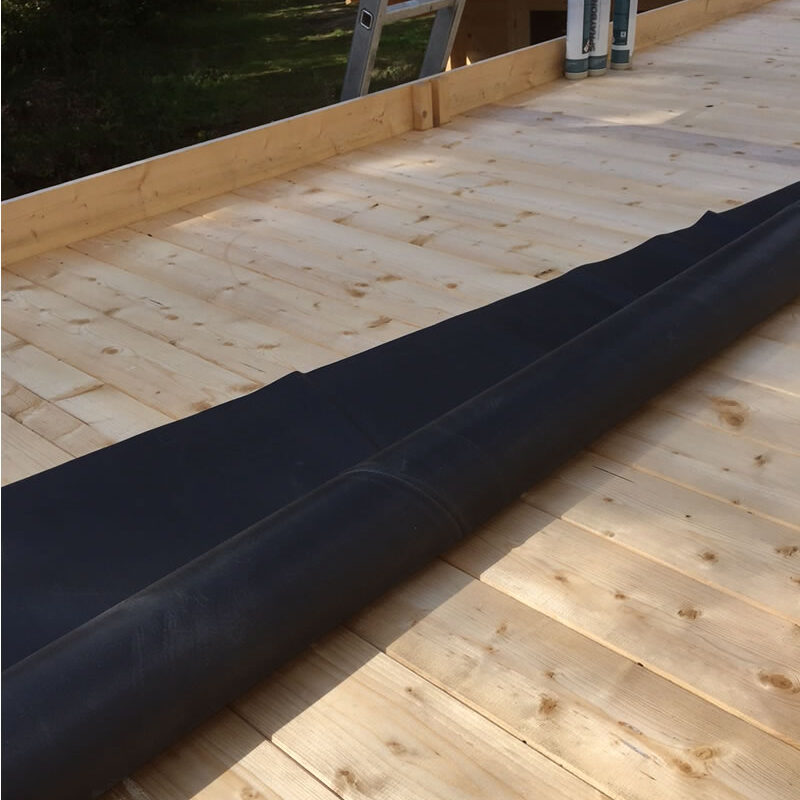
Glue the EPDM Down
This part of the install on your log cabin is exactly what it says, we are just glueing it down on to the roof. How you want to trim it is up to you, I may have mentioned this.
The principle is how I’m glueing it.
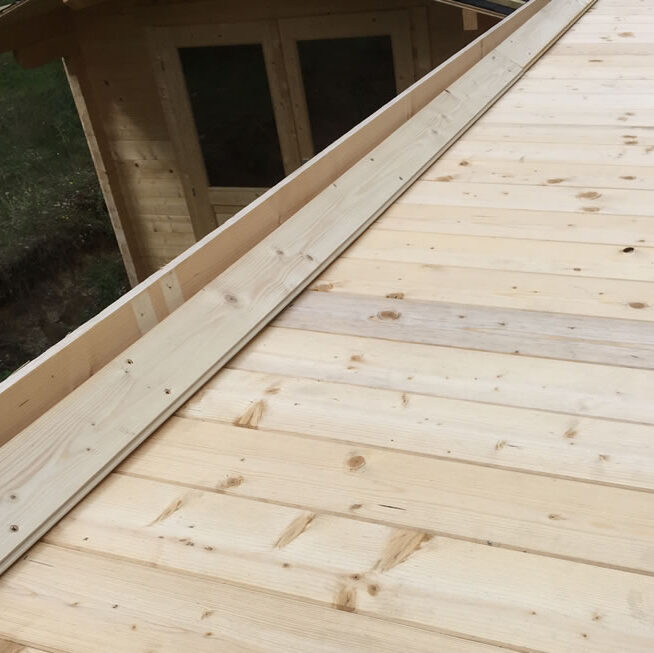
This is something I do, you do not have to do this unless you want to.
As you will see from this picture I have used a bit of timber to create a slope against the barge board. You do not have to do this, you can finish it as you want, tuck it behind the board, glue it directly to it, however you wish.
I’ve done this though as I think it looks nicer, it also stops water going behind the barge board. Due to the height I raised the boards I was able to use a floor board to create the slope, if I had less of a height I might use a trim from skirting or roof boards or even a packing piece laying around. There is no hard and fast rules on this, other than it needs glueing down.
I now shuffle it forward, aligning the edge to where I finally want it to finish. Give the cans a good shake, I think they advise two or three minutes of vigorous shaking, I can’t remember but give them a good shake for a while.
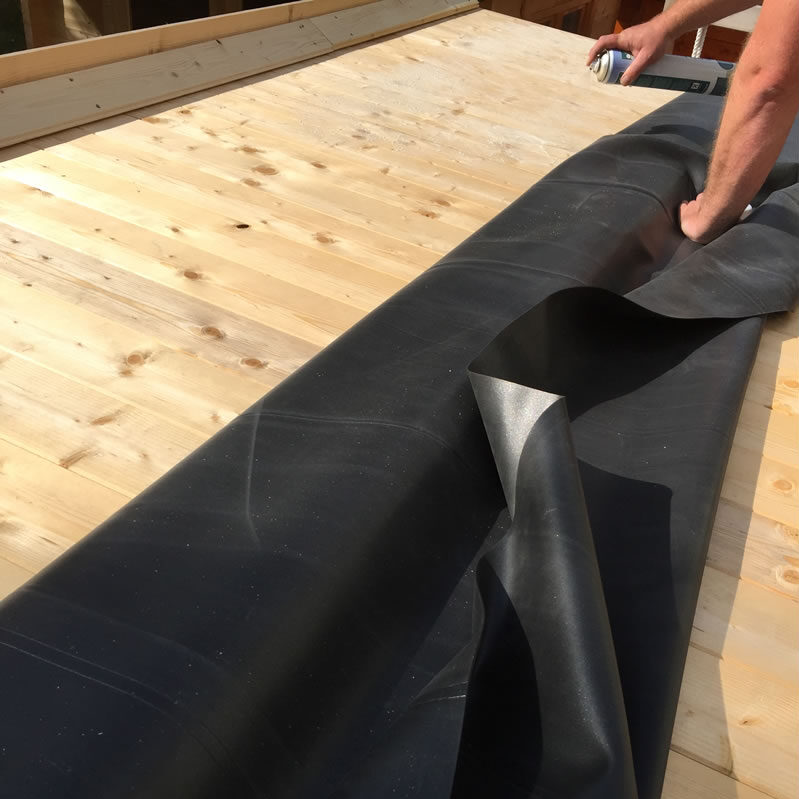
Once everything is aligned and the cans have had a good shake then roll the sausage back slightly. With the sausage rolled back a little you can take the front and uncover the area to be glued. Then spray the glue evenly at a length of about 50cm all the way along the roof, it does start to go off pretty quickly. You don’t need to apply it really thickly, too thick and you fight against the glue itself.
Don’t spray right to the ends or right to the front at the moment. Glue all the way along the roof at about a depth of 50cm so the glue does not go off too quickly. Then fold the membrane forward and start to smooth out.
I’ve seen videos and instructions and professionals and all sorts of recommendations on how to smooth out the EPDM, they’re probably really good and certainly give them a go and let me know how you get on but I still prefer to use my hands and push out the bubbles of air, smoothing the membrane as I go.
Note though I haven’t glued the edges yet as I may want to still much about with this. This is particularly the case at the sides as the barge boards are still not on.
- Once the first part is done, now knell on it and roll out the reast, glueing every 50cm as you go, smoothing out as much air bubbles as you can.
- Glueing ever 50cm and then rolling out
- Smooth as you go
I use my hands but you may have a better idea or system or received better advice.
Another 50cm and the roof is glued down and that’s as far as this advise goes on laying EPDM. It’s really quite straightforward, we’re unrolling it, then glueing down, and smoothing it out.
When the main body of the roof is down you can then work on the edges and fit the barge boards and trims as you require and completing the final glueing stage in these areas.
Afterwards, the rest is up to you.
Trim your Log Cabin EPDM Roof as you wish
I’m often asked what is supplied as regards trims when laying EPDM. I answer there is nothing extra and nor does their need to be you can use this exactly as you would felt. You can though utilise offcuts and produce slopes to ensure all the water is taken away and make a really professional job of it.
You can also use capping pieces on top to make it look nice or battens to secure it fully so as not to rely wholly on the glue at that point.
I have the slope at the front you have already seen but I also did the same at the sides and added a capping piece to make it look nice. To the side I have added a batten to sandwich the EPDM so as not to rely completely on the glue at that point (in this picture I am yet to cut the batten flush with the barge board)
Overall, not a bad finish, most of the air bubbles came out and pretty smooth. Shame about my boot marks but they will wash off and the creases will disappear.
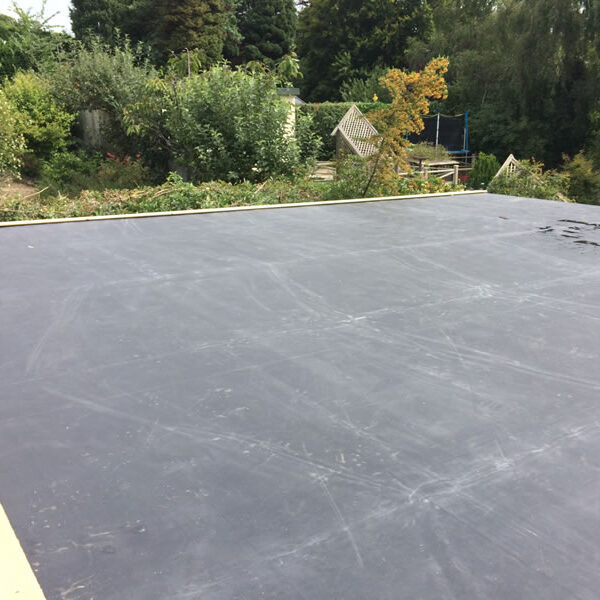
This is another fitters roof on a Yorick Log Cabin, he finished everything flush and that is his preference and still works the same in producing a secure roof for many years with water draining to the rear and following the slope. Upstands are always better though and prevents any rot to trims.
Another fitter has added a small up stand and uses a batten to fix the EPDM at the top. Whereas someone else has gone to town making top trim pieces. We also sell aluminium strips that can do this for the front of the cabin.
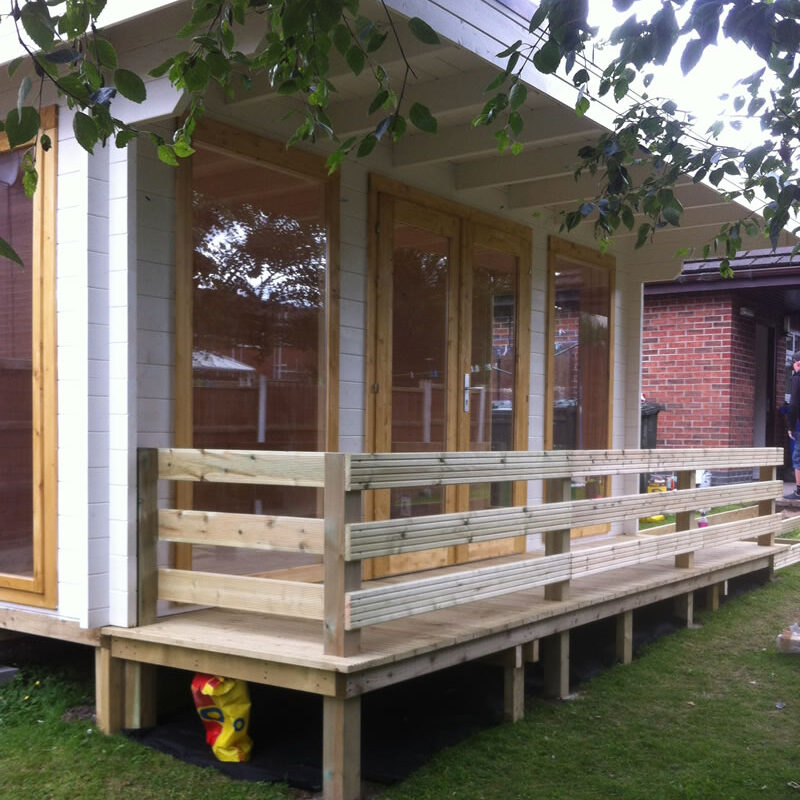
On the contrary, just fold it over the top of the barge boards. This is the Yorick Log Cabin and a customer chose to do this. Nothing wrong with is at all other than perhaps aesthetics.
Summary on Laying EPDM
In summary all we are trying to do is glue down the membrane with as little bubbles in it as we can.
We also want the roof to drain well and if you wish, it’s nice to create slight slopes all around to encourage the water to flow. This is something the flat roof boys do on your house so we may as well do it on our log cabin. You don’t need anything special apart from a few off cuts of wood which you will have when you have finished your cabin.
Some customers worry about laying EPDM on their log cabin but it is far the quickest roofing method, it doesn’t rip, it’s quite forgiving and easy to work with unlike felt which can be a real pain especially in very hot weather. Plus in the past 17 years now I have never had to re-meet a customer to re-do his EPDM, I’ve met a few to re-felt though!
Trimming is easy but have a ponder on how you would like it to finish before you start and make sure water drains away if the roof is totally flat on your log cabin.
For our modular buildings there will be a join as each part of the building is a separate section, all you do is glue over the seam as you would the roof and as long as you are flat this is not a problem, professional flat roofers do exactly the same.
As always, if you have any questions, please let me know.






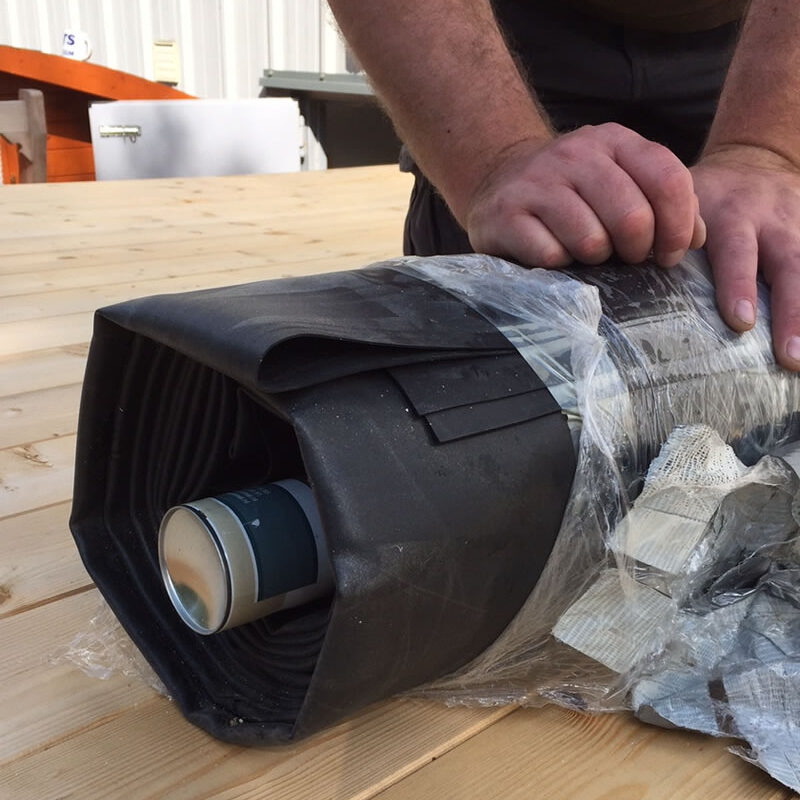
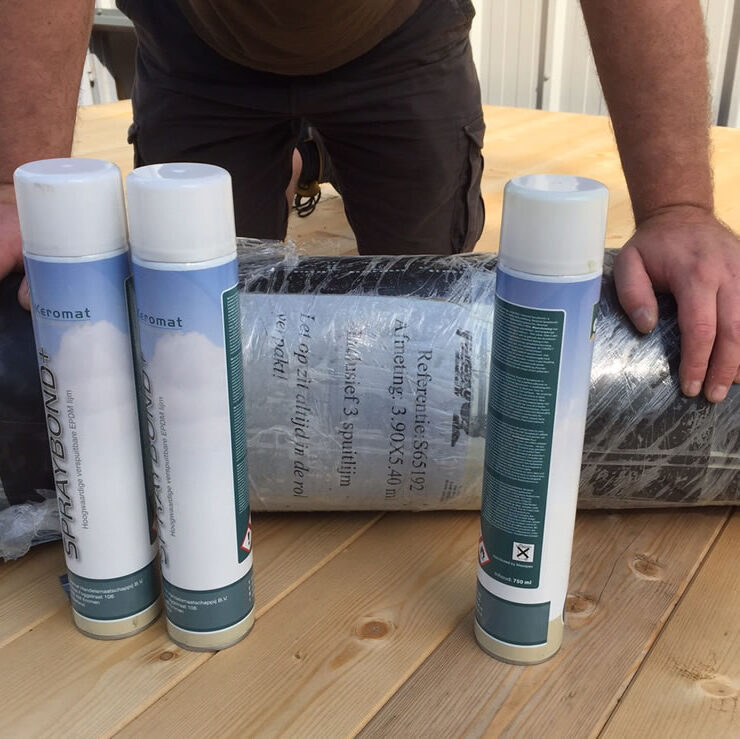
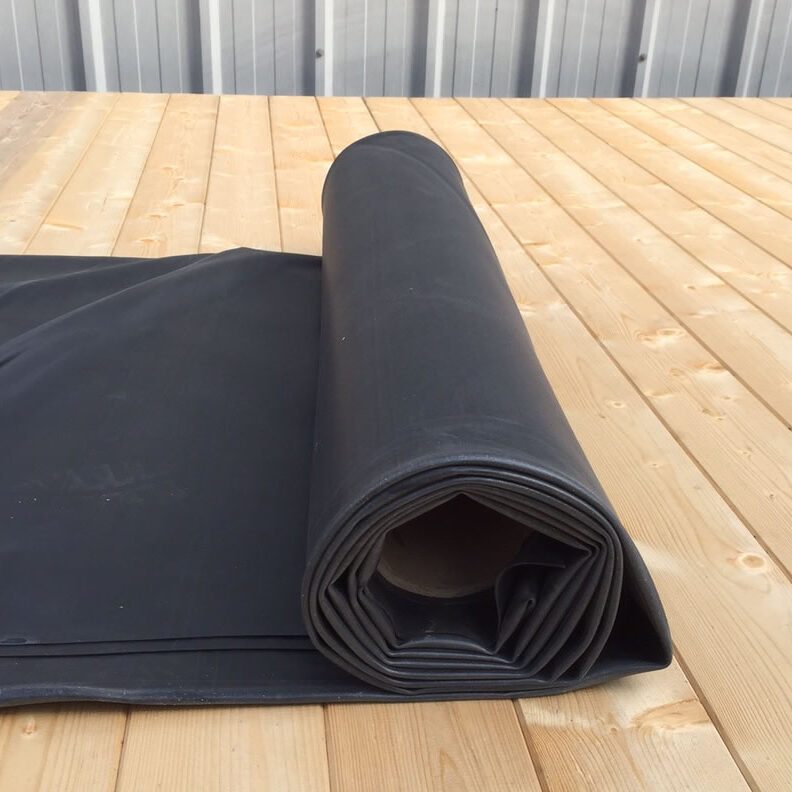
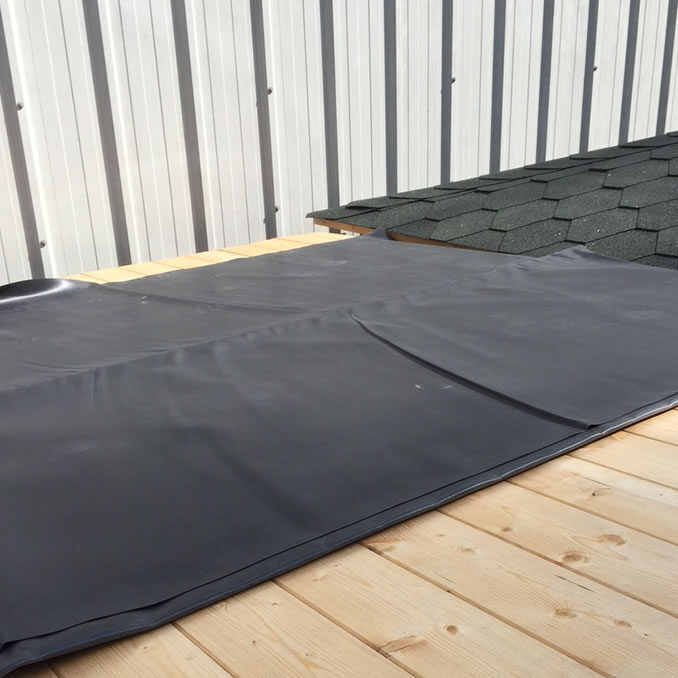
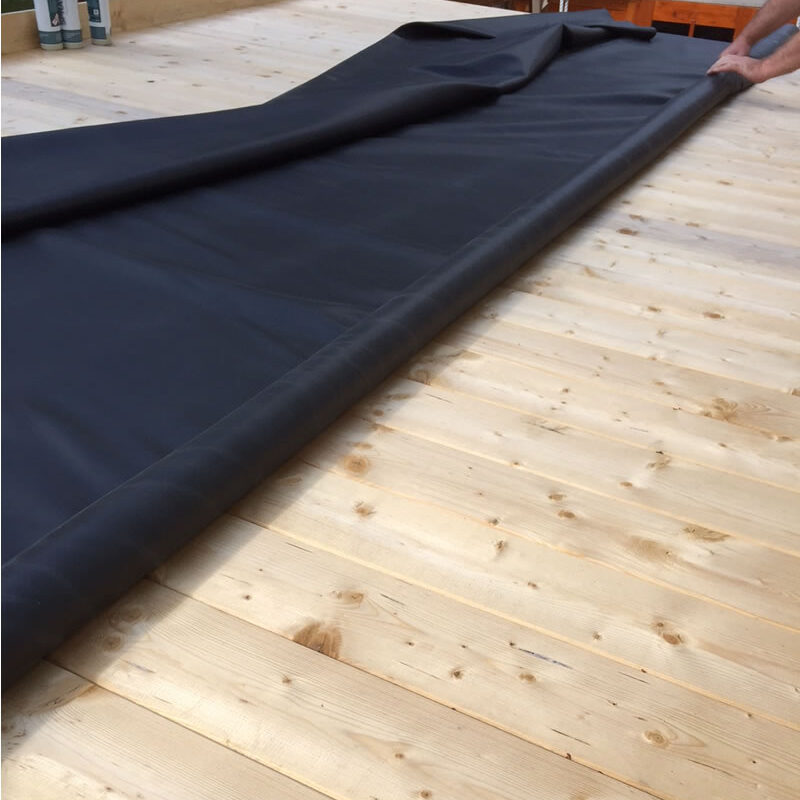
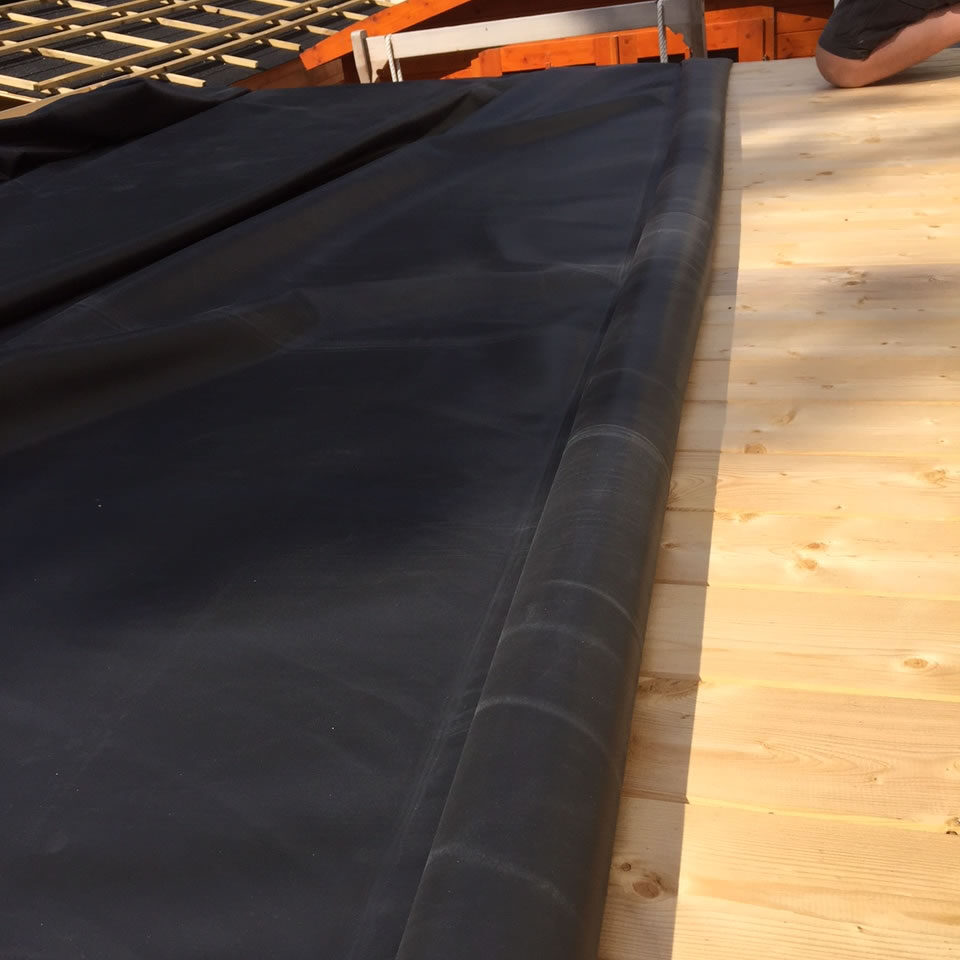
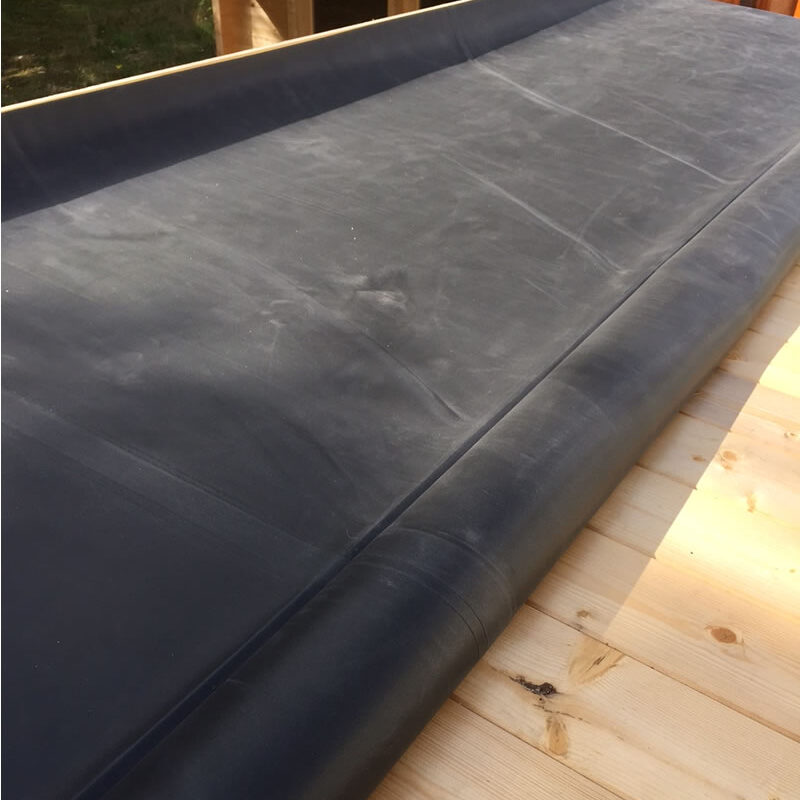
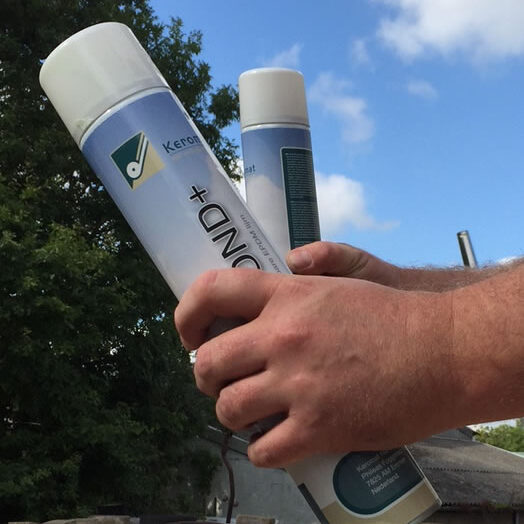
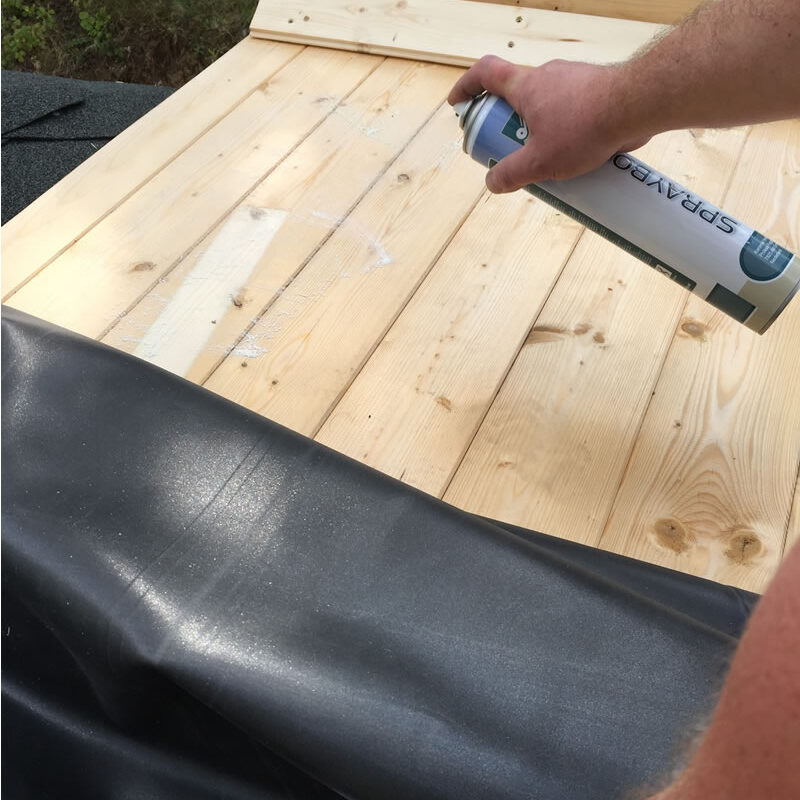
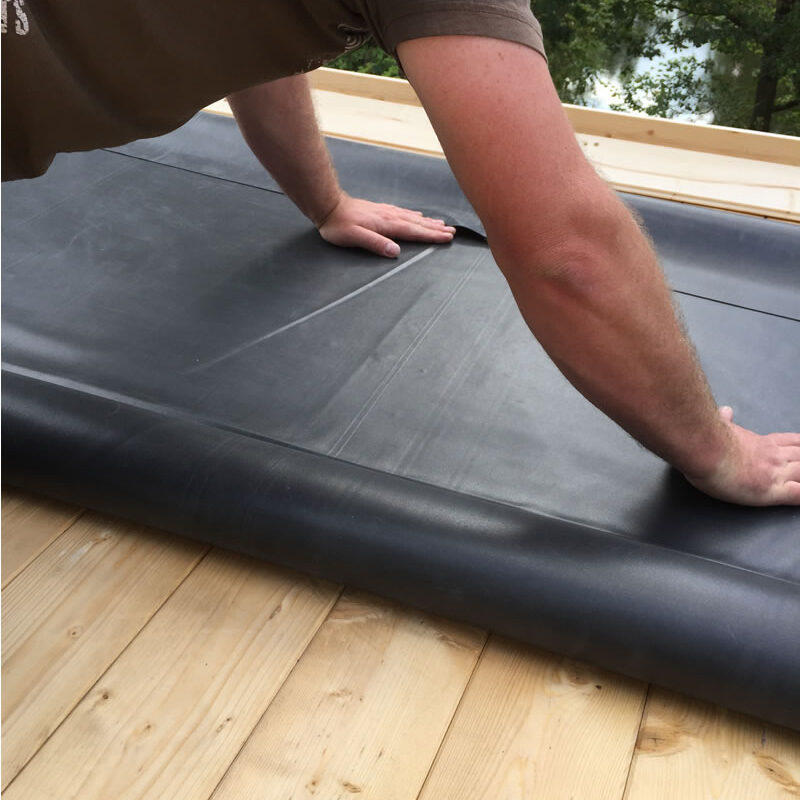
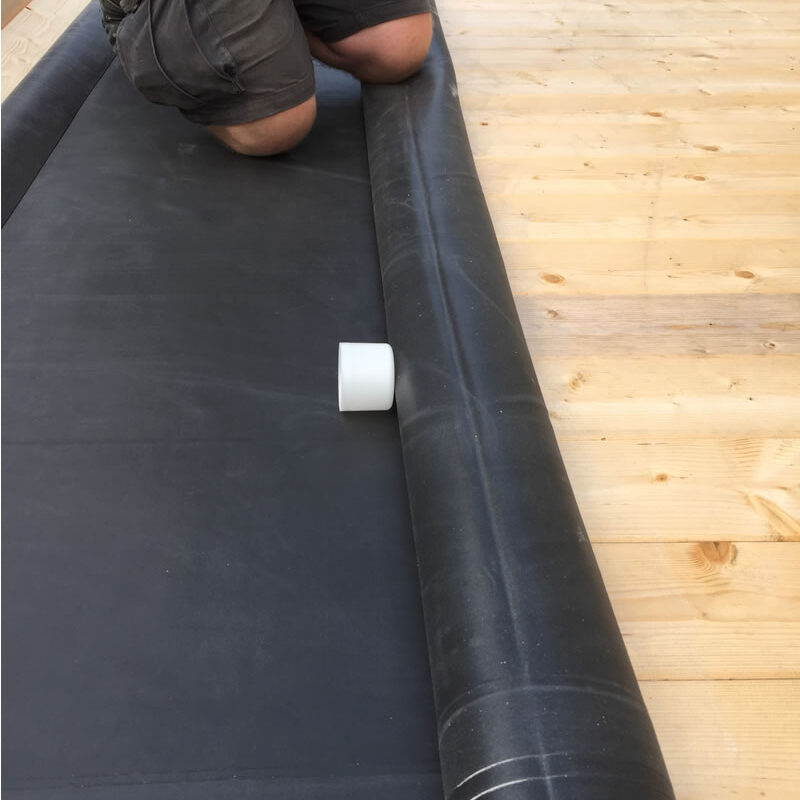
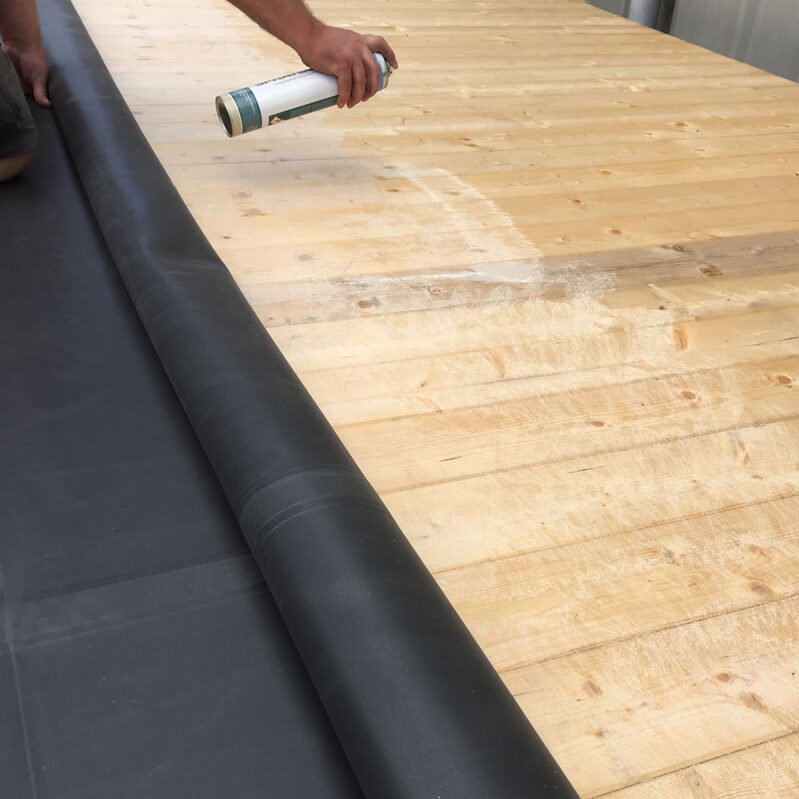
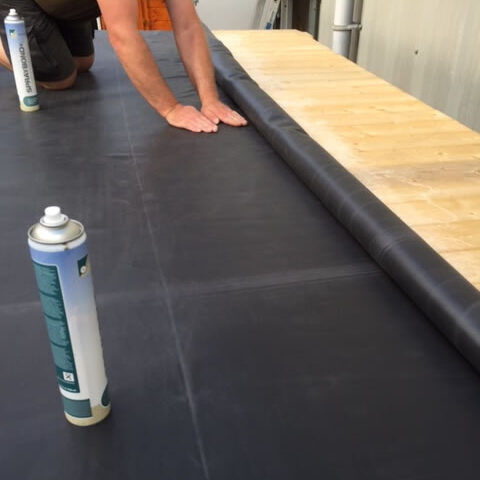
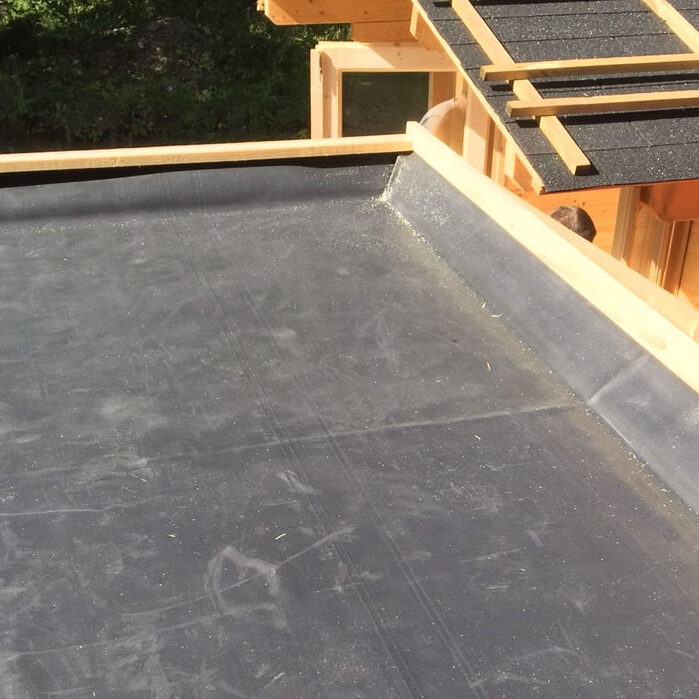
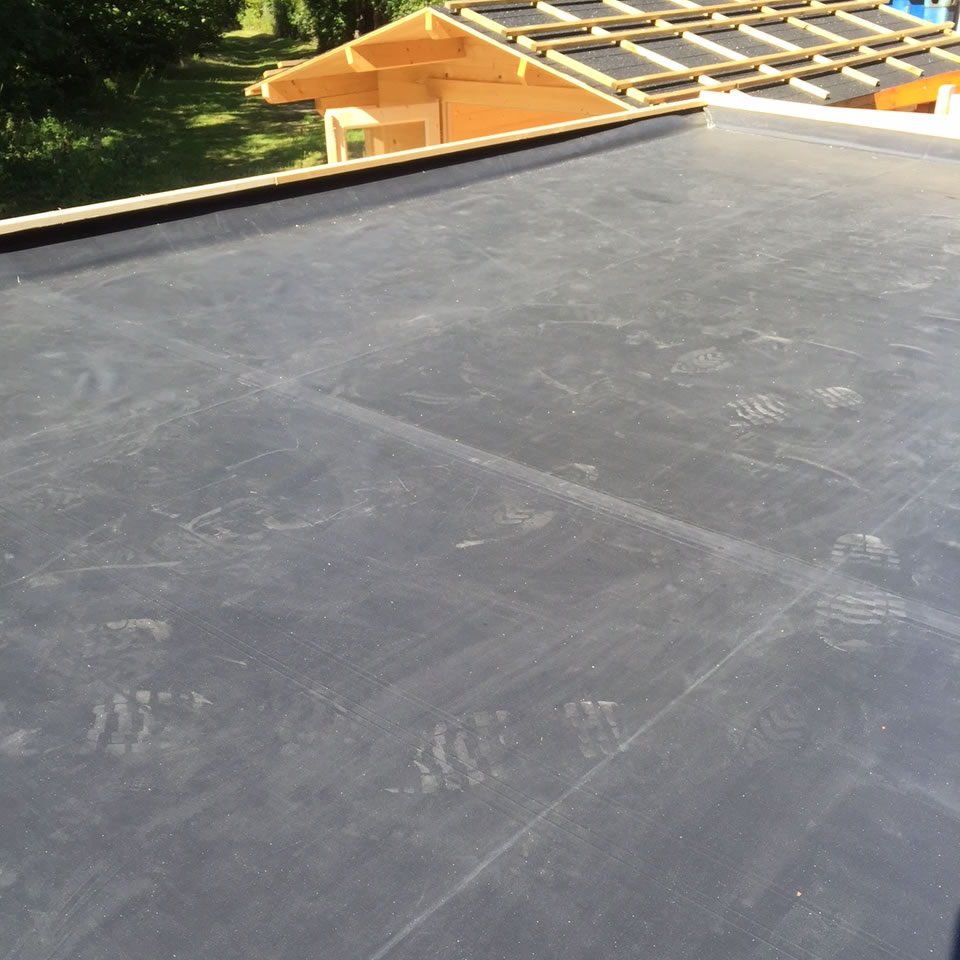
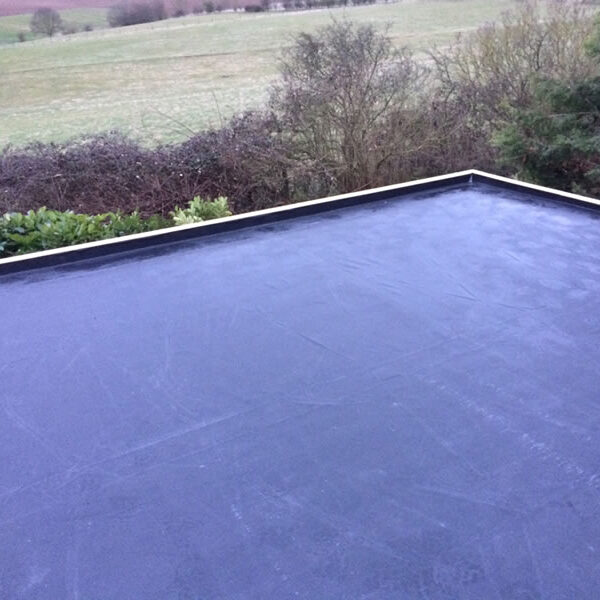
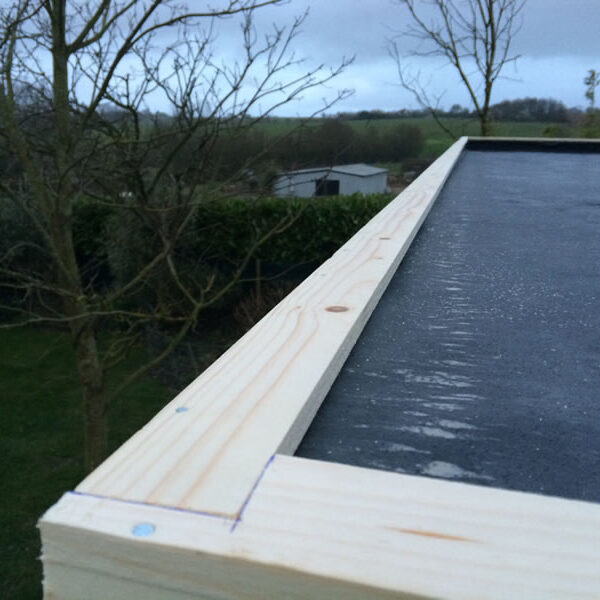
Hi Richard
I have a Tuin Fabio gazebo and liked you rides of angled sides to help channel the water away. The question Inhave is how do you trim/fold for internal corners?
They have also provided a drain pipe with a circular rubber collar. I assume this glues over the Edomite roof and not under it?.
I hope you can help thanks Norman
Hi Norman
Happy to help, To finish off the internal corners you will need to make some angle slits, allowing the rubber to then be folded in on itself neatly
The drainage outlet provided will normally be fitted before the EPDM sheet, Please see the video from around 19 minutes in here, Pent Log Cabin Installation
Hi Richard I’m doing a modern gazebo with a epdm roof , im assuming the same technique applies , I have been supplied with roof felt nails , I assume this is for the sides of the roof? Hope you can help
Cheese kevin
Hi Kevin
Happy to help and thats correct, The exact same applies for the modern gazebo range. the nails will be for the roof trims. Only glue will be needed for the bulk of the EPDM laying
How you then finish the EPDM on all four sides can vary, Its best to dish up the front and sides at least with a run off for the back
Hope this helps, Ben
In case of a 50mm Celotex/Kingspan insulation applied on a flat roof, then plywood and then the EPDM membrane, how can all these can be secured as they are one on top of the other? Should the Kingspan be glued or nailed on the roof, what do you recommend there? And then the plywood on the Kingspan, how do you secure that as well? Thanks. Thanos.
Good Morning
When insulating a modern flat/pent roof you start by laying the roof boards as normal, then you would need to frame the top of in a similar way when compared to a floor with “joists” running around and in the middle at intervals relevant to the sizing of your plywood. The framing would get screwed down to the roof boards. Insulation then goes in the cavities followed by the plywood on top which gets fixed to your framing timbers.
The Epdm will then get stuck to the top of the plywood
Hi, great post thanks!
Our Charlie cabin arrives tomorrow so thinking about ordering roof insulation and was wondering whether it is possible to glue the EPDM directly on non-foil insulation boards or would you recommend putting OSB boards prior to gluing the EPDM on top of the board?
Thanks in advance.
You could try glueing it to the boards but you might have indents of the EPDM where the joins in the boards are.
Hello,
Is it possible to “peel off” the EPDM foil once it is glued on? Provided I do not rip it apart, is this action going to somehow compromise the integrity of the material?
I am looking at a water pooling scenario against the edge of my roof on Jutka cabin, the left hand side above the wall A. Looking at my bottom row of roof beams crossing at the post, they are all level so the last row of the wall should provide enough slope and yet it is almost level.
I was contemplating raising the post height a bit more, but I am thinking that this will negatively impact the whole structure…
If I get the EPDM of that section of the roof I can increase the angle by unscrewing the roof boards and raising them slightly at the front. I guess if I rip the EPDM foil I will have to purchase section that needs to be replaced…
Great blog and very useful advice on all aspects of self build of a timber cabin.
I’ve been able to peel it off in the past, it is quite strong stuff. Easy to re-glue down again as well.
What if its raining?
If the roof is wet you will not be able to apply the glue, the roof boards need to be dry.
I’ve ordered shingles for my Jos Log Cabin. Do I need this membrane as an underfelt,
You would not use EPDM as an under membrane. If you wish to use one there are many available including ordinary roofing felt.
Great info, thanks. If I want 50mm insulation sheets on the roof of my Flow cabin, I guess I put plywood sheets on top of them and then stick the EPDM on top of the ply in the same way you have described.
Yes, that is correct, only a thin sheet is needed and you will need to create a frame for each of the sheets to secure them. The EPDM can then be applied as normal.
Any good reason not to use rubber on a pitched roof. A lot of shed installers use it.(looking to buy a cabin in the Spring)
Don’t like shingles.
Certainly you can use epdm on a pitched roof, it does not really look very nice though. You could consider metal roofing sheets or sedums if you do not like shingles.
Is there a drainage hole or channel?
Drainage would depend on what you want to do with your roof. Water can either run off naturally behind the rear bargeboard. you can also place guttering if required. If it is a sealed dished roof you can install outlets such as this: Flat roof Drainage Outlet
I’ve ordered shingles for my Peter Cabin. Do I need this membrane as an underfelt, or can the shingle stand alone?
EPDM and ERM is only for a flat roof log cabin. You would not usually need this for a pitched roof log cabin. Please see this page for further advise when using roof shingles: http://www.tuin.co.uk/IKO-Felt-Shingles.html
A fantastic guide to EDPM and great DIY step by step instructions.
Thanks for the post! The beauty and simplicity of an EPDM rubber roof for your log cabin means that it really is quite easy to fit yourself without any problem. As your post clearly shows it’s a very easy DIY job. It’s great that it can be supplied in the dimensions you specify and you can actually cover the entire log cabin roof with one single sheet of rubber. This eliminates altogether the risk of leaks developing in weathered or badly sealed felt joins.